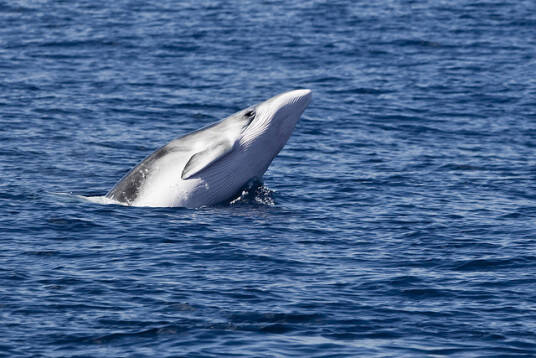
Mesoplodon stejnegeri
Stein's beaked whale, North Pacific beaked whale, Saber-toothed beaked whale, Bering Sea beaked whale
Stejneger's Beaked Whale, scientific name Mesoplodon stejnegeri, foreign···

Mesoplodon peruvianus
The Peruvian Beaked Whale is the smallest of the Mesoplodon peruvianus. The ···

Mesoplodon mirus
Trujillo's beaked whale, Wonderful beaked whale
True's Beaked Whale has never been identified at sea, so nothing is know···

Mesoplodon layardii
Long-toothed beaked whale, Lyman's beaked whale, hook-toothed beaked whale, long-toothed whale
Mesoplodon layardii, also known as Strap-toothed Whale, is the largest of th···

Hector's Beaked Whale
Heck's beaked whale, New Zealand beaked whale, Heck's beaked whale
Hector's Beaked Whale was first discovered in 1866, but until 1975, ther···

Mesoplodon grayi
Gray's Beaked Whale's scientific name is Mesoplodon grayi, and its f···

Mesoplodon ginkgodens
Japanese beaked whale, Ginkgo beaked whale, Ginkgo-toothed beaked whale
Ginkgo-toothed beaked whale (scientific name: Mesoplodon ginkgodens) is call···

Mesoplodon europaeus
Theodore's beaked whale, Gulfstream beaked whale, European beaked whale, Andreas' beaked whale
Gervais's beaked whale was first recorded in the 1840s as a specimen flo···

Mesoplodon carlhubbsi
Harvey's beaked whale
Hubbs' Beaked Whale has only one possible sighting, and very little is k···

Mesoplodon bidens
Thor's beaked whale, North Sea beaked whale Thor's beaked whale, North Sea beaked whale
Sowerby's Beaked Whale, scientific name Mesoplodon bidens, foreign name ···

Hyperoodon planifrons
The scientific name of the Southern Bottlenose Whale is Hyperoodon planifron···

Hyperoodon ampullatus
North Atlantic bottlenose whale, flathead whale, bottlehead whale, steep-headed whale
The scientific name of the northern bottlenose whale is Hyperoodon ampullatu···

Arnoux's Beaked Whale
Arnold's beaked whale, southern four-toothed whale, southern beaked whale, New Zealand beaked whale, southern bottlenose whale, southern porbeagle whale
Arnoux's Beaked Whale, scientific name Arnoux's Beaked Whale, is usu···

Platanista gangetica minor
Indus River Dolphin, South Asian River Dolphin Indus subspecies
The Indus River Dolphin (Platanista gangetica minor) is one of the few dolph···

Caperea marginata
Small right whale, dwarf whale, dwarf whale, small right whale, pygmy right whale, new right whale
The scientific name of the pygmy right whale is Caperea marginata, and its f···

Balaenoptera bonaerensis
Antarctic baleen whale, Southern minke whale
Antarctic minke whale (scientific name: Balaenoptera bonaerensis) is also kn···

Eubalaena australis
Southern right whale (scientific name: Eubalaena australis) is also known as···

Eubalaena glacialisBorowski
Eubalaena glacialis Borowski
The North Atlantic right whale (Scientific name: Eubalaena glacialis Borowsk···

Berardius bairdii
Berardius bairdii,Baird's beaked whale,Bell's beaked whale, Bell's beaked whale, North Pacific bottlenose whale, North Pacific four-toothed whale
Baird's beaked whale, whose foreign name is Baird's beaked whale, ma···

Mesoplodon densirostris
Mesoplodon densirostris,Bryde's beaked whale, Bryde's beaked whale, Blunt beaked whale
Blainville's beaked whale is the most common species in the genus Blainv···

Ziphius cavirostris
Ziphius cavirostris,Cuvier's beaked Whale,Cuvier's beaked whale, goose-billed whale, Cuvier's beaked whale, goose-billed whale, Cuvier's beaked whale
Cuvier's beaked whale, whose foreign name is Cuvier's beaked Whale, ···
